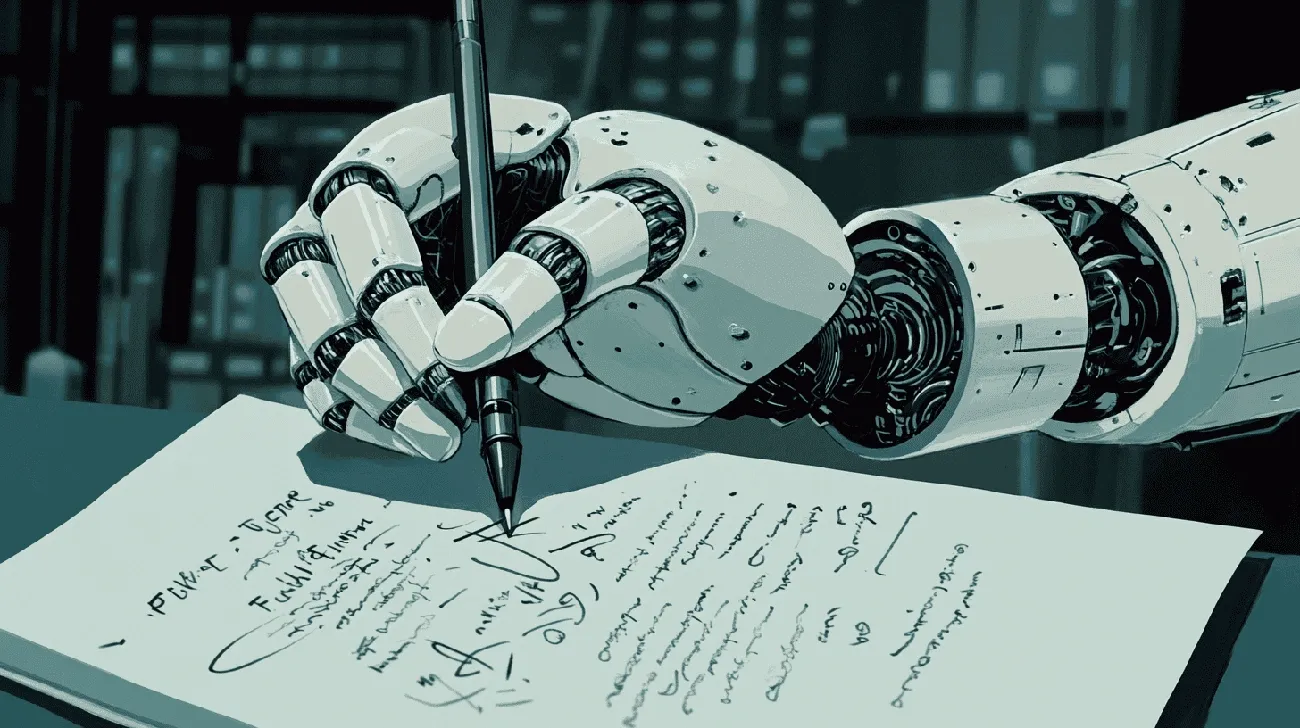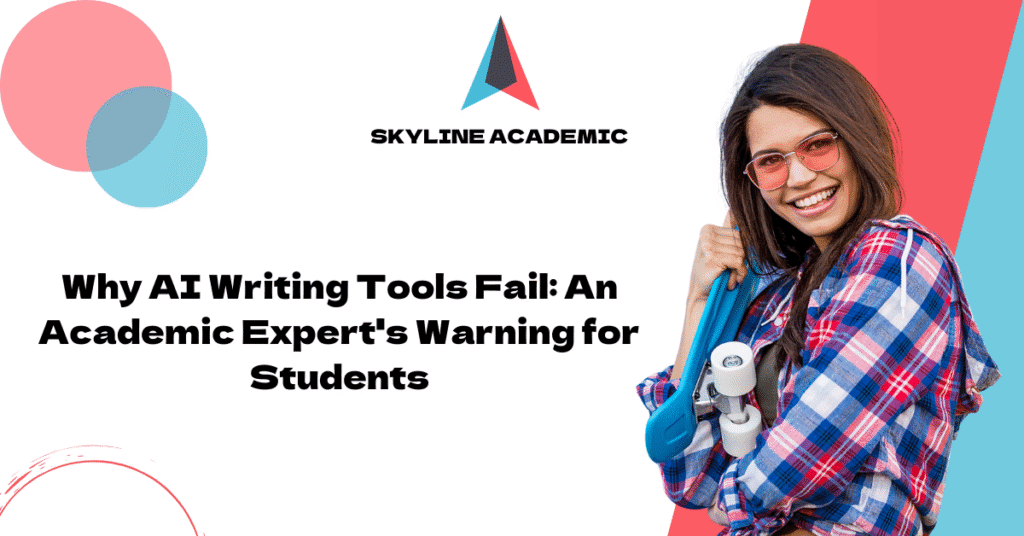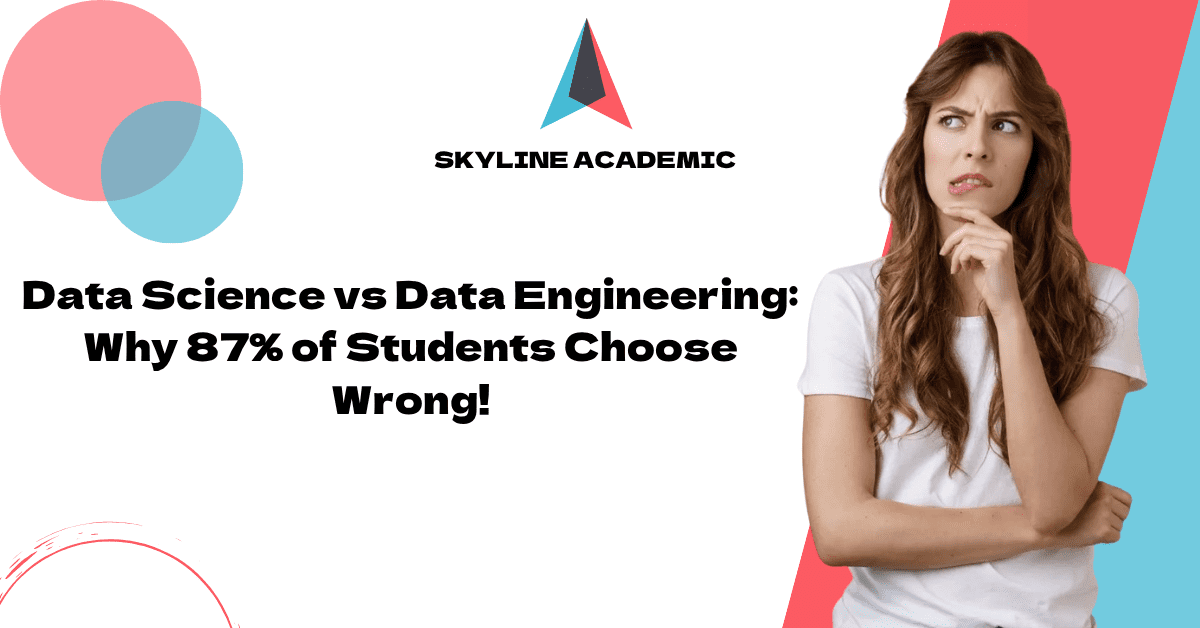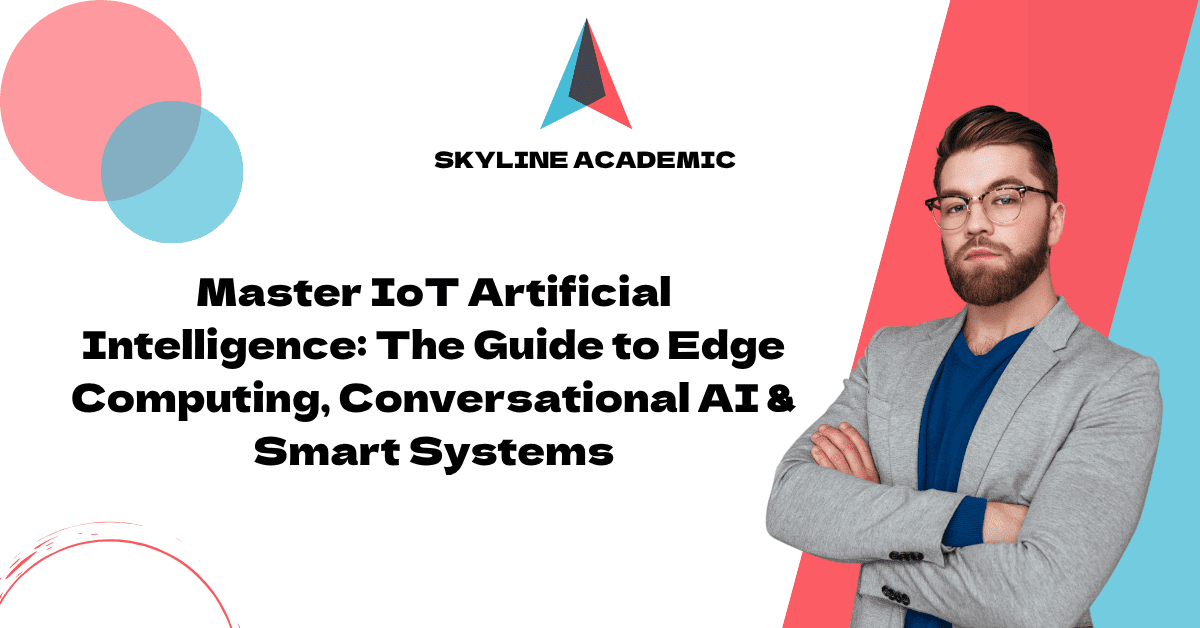Why AI Writing Tools Fail: An Academic Expert’s Warning for Students
Students face a minefield in the relationship between AI and writing. One free detection tool wrongly flags over 27% of legitimate academic text as AI-generated. OpenAI’s decision to shut down their own AI detection software due to poor accuracy might surprise you. Your academic integrity stands at risk through no fault of your own.
The best AI detection tools only get it right about half the time when distinguishing between human and artificial intelligence writing. Teachers check research papers by looking for patterns in perplexity and sentence variation. Skyline Academic has stepped up with a solution that boasts over 99% accuracy for AI models of all types, including ChatGPT and Gemini. These false positives create more than just inconvenience – they can result in serious academic penalties and permanent marks on your record.
This piece gets into why AI detection accuracy remains problematic and explains how teachers spot AI-generated content. You’ll find ways to protect yourself from unfair accusations. Ground analysis of over 20,000 human-written papers shows the industry’s lowest false positive rate of just 0.2%. The right tools make all the difference as you navigate the complex world of academic integrity.
Why AI Writing Tools Often Miss the Mark

Image Source: Gold Penguin
AI writing detection tools might sound good on paper, but reality paints a different picture. These systems make too many critical mistakes that can hurt students’ academic careers unfairly.
False positives and false negatives explained
AI detection tools produce two main types of errors. False positives happen when these systems wrongly label human-written content as AI-generated—a serious issue that leads to unfair academic misconduct accusations. False negatives occur when AI-written text slips through undetected.
These errors pack quite a punch. Research shows a free AI detection tool wrongly flagged over 27% of genuine academic writing as AI-generated [1]. It also turns out that Turnitin—a popular detection platform—admits to a 4% error rate at the sentence level [2].
Here’s something that should raise eyebrows: OpenAI pulled the plug on its own AI detection tool because it only achieved a 26% success rate [3]. Research from the University of Maryland backs this up, showing that no AI detectors available to the public work reliably enough in real situations [2].
Why AI detection accuracy is still unreliable
AI detection tools can’t nail accuracy for some basic reasons. These tools don’t know truth from fiction—they just spot patterns [4].
The problem gets worse when you look at different AI models. Research shows these detection tools worked better with GPT 3.5-generated content than with GPT 4 [5]. As AI technology evolves faster, this creates a moving target.
Skyline Academic has stepped up to tackle these challenges with detection technology that produces far fewer false positives than mainstream tools. While other systems struggle with reliability, Skyline’s method aims to cut down false accusations while keeping detection accuracy high.
How AI tools misread human writing patterns
AI detectors often get it wrong with certain writing styles, especially when you have neurodivergent students and non-native English speakers [6]. These systems flag writing that repeats phrases and uses unusual sentence structures—exactly what shows up naturally in these students’ work.
This creates an unfair playing field in academia. Studies reveal that text from non-native English speakers gets labeled as machine-written more often [3]. Students who use grammar correction tools—a common practice for all writers—face higher risks of getting flagged wrongly [3].
The biggest problem lies in how AI detection depends on statistical patterns instead of truly understanding human expression. As AI writing and human writing join together, experts believe telling them apart will become impossible [2]. This makes ethical AI usage policies, not detection, the greener approach.
The Hidden Risks for Students
AI detection failures create serious real-life consequences for students that go beyond theory. These flawed systems raise important questions about their ground application in academic settings.
Unfair accusations and academic penalties
False positives from AI detectors devastate student lives. Bloomberg testing reveals that even with a modest 1-2% false positive rate, 223,500 essays could be wrongly tagged as AI-generated [7]. Students face harsh penalties from failing grades and detentions to NHS exclusion and academic probations.
RNH’s case shows what happens when things go wrong. Three different AI detection tools flagged the student’s project. This led to a failing grade, Saturday detention, and National Honor Society exclusion [8]. Emily’s story echoes similar pain. She wrote her essay herself but faced accusations that caused emotional distress throughout the investigation [9].
The impact reaches far beyond grades. Students lose scholarships, get permanent record marks, and see their future opportunities vanish [7]. Many students then record their screens for hours or document every step of their writing process to prove they did the work [10].
Bias against non-native English speakers
The detection tools show troubling bias against specific student groups. Stanford University research found that these tools misclassified more than half of non-native English writing samples as AI-generated. One detector wrongly flagged nearly 98% of TOEFL essays [11].
Research shows that all but one of these detectors labeled 97% of texts from non-native English speakers as AI creations [12]. Non-native speakers face a tough choice: they need AI tools to overcome language barriers, yet using them could lead to punishment [12].
“We cannot escape from language alertness,” noted one researcher, highlighting how non-native speakers face constant examination no matter what approach they take [12]. Skyline Academic takes a different path by building detection systems that reduce these biases and offer fairer assessment for all students.
Loss of trust between students and teachers
AI detection tools damage the student-teacher relationship at its core. Universities report that trust between students and educators keeps eroding [9]. Students feel examined rather than supported.
“There will be other university staff, even the faculty dean, and many others whom you may have never met before… I can’t take this risk,” one student explained about investigation hearings [9]. Class sizes and arrangements make students feel like numbers rather than people [9].
This climate of suspicion hurts learning outcomes. Students waste energy trying to avoid detection flags. Some build personal connections with professors just to protect themselves against false accusations [9]. UC Berkeley ended up disabling detection features. They learned that “overreliance on technology can damage a student-and-instructor relationship more than it can help it” [10].
How Professors Spot AI-Generated Work
Professors use several strategies to spot AI-generated text in academic work. These detection methods grow and adapt as AI writing technology advances.
Use of AI detection tools like Turnitin and GPTZero
Teachers rely heavily on specialized software to spot suspicious content. Turnitin, which more than 30,000 academic institutions trust, has an AI Text Verifier along with its plagiarism checking features [13]. On top of that, it’s common for educators to use GPTZero, which looks at “burstiness” (variation in sentence length) and complexity patterns that humans typically use when writing [14]. Copyleaks states it has 99.12% accuracy in detecting AI content, though experts debate these high numbers [3].
Manual review of writing style and tone
Experienced professors can spot AI writing signs beyond just using automated tools. They know AI tends to write with the same sentence structure throughout, doesn’t show personal style, and uses grammar that’s almost too correct [15]. Many professors test their assignments through ChatGPT to see what AI-generated answers look like for their specific questions [16].
Checking for fake or AI-generated citations
Fabricated references are a big warning sign. AI systems often make up sources that don’t exist or create citations without proper DOIs or identifiers [17]. Faculty members check sources by hand and watch for odd publication dates or generic author names to curb this issue [18].
Comparing with previous student submissions
Teachers get the best results by comparing current work with past assignments. They use tools like Revision History to see how documents change over time, which shows suspicious editing patterns [19]. Big changes in writing quality or style between assignments usually lead to more questions [16].
Why Ethical Use of AI Matters More Than Ever
AI writing tools have become widespread in academia, making ethical boundaries more significant than ever. The focus must change from detection to responsible usage.
How to use AI for brainstorming, not full writing
You can boost your academic process with AI tools ethically through appropriate use. Ethical guidelines approve these AI applications:
- Summarizing information from verified sources
- Brainstorming new ideas and research directions
- Improving clarity, grammar, and punctuation [20]
In spite of that, AI writing complete essays or solving problem sets breaks ethical boundaries. AI should work as your assistant, not your replacement [6].
Understanding your university’s AI policy
Universities typically categorize their AI policies into three groups:
- Specific AI uses encouraged (brainstorming, editing)
- AI allowed with transparent disclosure
- AI completely prohibited [1]
Harvard Graduate School of Education’s policy, to cite an instance, supports responsible experimentation while requiring acknowledgment of AI assistance [5].
When AI use becomes plagiarism
Submitting generated content without proper attribution turns AI use into plagiarism [20]. Academic integrity violations happen when you:
- Submit AI-generated papers as your own
- Use AI-created references without verification
- Fail to disclose AI involvement [21]
Tools that support ethical writing like Thesify
Thesify and similar tools provide ethical alternatives by offering feedback instead of generating content. Thesify helps improve your existing work through targeted questions that encourage deeper thinking, unlike problematic generators [22].
Skyline Academic Resources provides tools and guidance on ethical AI use in academic writing. Our website offers more information about integrating AI tools into your studies while preserving academic integrity.
Conclusion
AI writing tools have advanced rapidly, creating a dangerous situation for students in academic institutions. Unreliable detection tools can destroy academic careers with false accusations. Detection systems don’t deal very well with accuracy. They flag legitimate human writing but miss actual AI content almost half the time. This reality unfairly affects non-native English speakers and neurodivergent students, making the academic world more challenging.
Flawed technology should not determine your academic integrity. Skyline Academic’s revolutionary detection system sets new standards with an industry-leading 99% accuracy rate and just 0.2% false positives. Unlike other tools that depend only on statistical patterns, Skyline’s technology effectively handles a variety of writing styles while delivering precise detection.
Trust between professors and students breaks down when AI suspicion becomes constant. Students should focus on using AI ethically for appropriate tasks like brainstorming and editing instead of avoiding detection. Note that you should check your university’s AI policies and disclose any AI assistance. Skyline Academic offers complete resources to help you direct these challenges while preserving academic integrity.
AI detection technology will keep developing alongside writing tools. Perfect detection might not exist yet, but you can combine ethical AI usage with reliable detection systems. Skyline Academic provides both tools and guidance to help you succeed honestly in this new academic environment. Your academic future deserves the most accurate protection available.
FAQs
Q1. Can AI detection tools accurately identify AI-generated content?
Current AI detection tools are not highly reliable. Studies show even the best performers only achieve about 50% accuracy in distinguishing between human and AI-written text. False positives, where human writing is incorrectly flagged as AI-generated, are a significant issue.
Q2. How do professors typically check for AI-generated work?
Professors use a combination of methods, including AI detection software like Turnitin and GPTZero, manual review of writing style and tone, checking for fake citations, and comparing submissions with students’ previous work. However, no single method is foolproof.
Q3. Are certain groups of students more likely to be falsely accused of using AI?
Yes, non-native English speakers and neurodivergent students are at higher risk of false accusations. Their writing patterns may be misinterpreted by AI detection tools, leading to unfair flagging of their work as machine-generated.
Q4. What are the potential consequences of being accused of using AI in academic work?
Consequences can be severe, ranging from failing grades and academic probation to exclusion from honor societies and permanent marks on academic records. These accusations can have long-lasting impacts on a student’s academic and professional future.
Q5. How can students use AI tools ethically in their academic work?
Ethical use of AI in academics includes using it for brainstorming, summarizing information from verified sources, and improving grammar and clarity. However, having AI write complete essays or solve problem sets is generally considered unethical. Always check your university’s specific AI policy and disclose any AI assistance used.


![Is Cyber Security Hard Expert Guidance Makes It Easy [2025]](https://skylineacademic.com/wp-content/uploads/2025/10/is-cyber-security-hard-expert-guidance-makes-it-easy.png)
